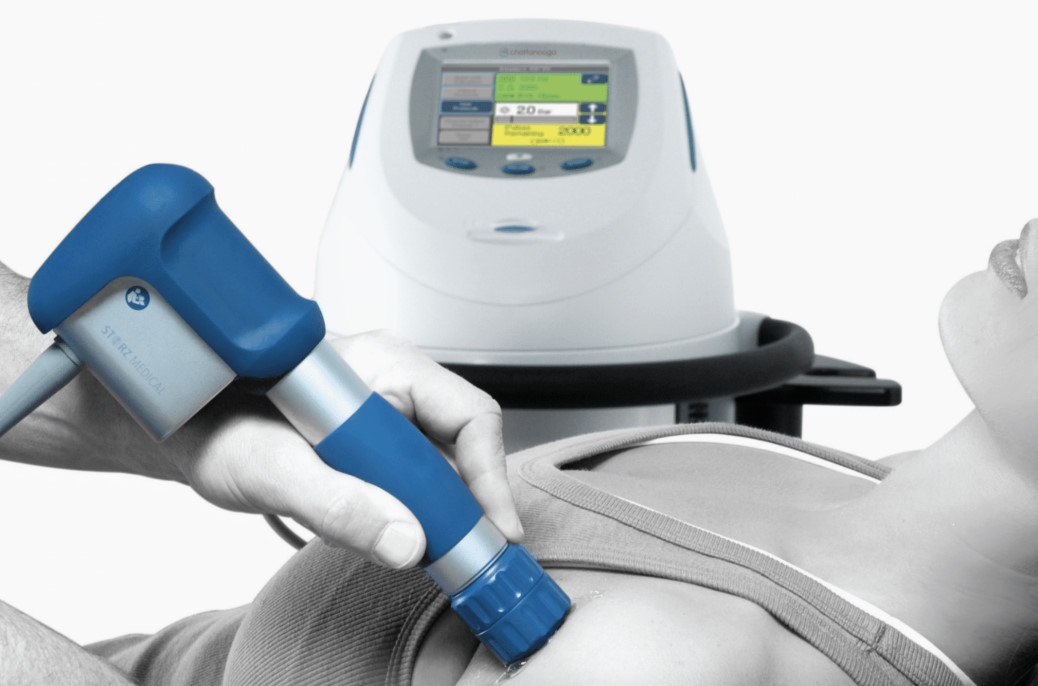How can shockwave therapy help you with your rehabilitation?
Trends in therapy must be built on science and review. If there is evidence that a particular treatment or modality works, it tends to show up in our practice. Recently (2019), one therapy method that has drawn lots of attention for its positive effects has been shockwave therapy.
How does shockwave work?
Shockwave works by delivering energy into tissues through a hand-held device that is placed on the skin. The energy is created by sound waves passing through a transducer, with the end result being a mechanical effect on the injured tissue. What’s a transducer? Good question! A transducer is the thing that the therapist holds against the treatment location. It converts electric or pneumatic energy into the shockwaves that transmit through the device.
There are two types of shockwave systems.
- Radial Shockwave (RSWT). This type of shockwave therapy uses compressed air (pneumatic) to work a small plastic ball or object to transmit the impact energy to the body. It’s a rather simple mechanical application but works quite well.
- Focused Shockwave (FSWT). This type of shockwave therapy uses electromagnetic or electrohydraulic energy to focus an accoustic wave that more accurately targets a specific tissue depth and is used for deeper therapies to tendons, connective tissue, and bones.
Most manufacturers and websites will give vague explanations for what shockwave does, without getting into the details of how it actually works. There are several reasons for this: First, the details are very complex and involve biochemistry and physiology that would make most of our heads spin. Second, shockwave has multiple effects on the body, and it’s not completely clear which of these effects creates the positive result. However, the most common theories suggest that it does several things:
- Promotes positive change in biochemicals in the painful region
- Promotes regeneration at the cellular level
- Because treatment does involve some discomfort, it stimulates pain inhibition in the brain
Our bodies can’t necessarily feel healing, but they can feel a decrease in pain. Success with shockwave means that there is less pain, which then opens the door to better movement and the ability to load tissues, which leads to strength improvements. In that way, shockwave can be an important part of a complete treatment plan, which also includes exercise.
As of January 2019, we have a shockwave machine in the clinic, ready to go. If you think you might be a candidate, talk to your physio to find out!


